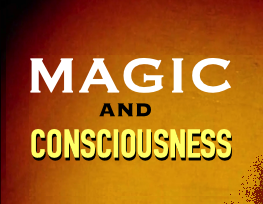 Magic, Consciousness, and the Living Wisdom of the Ancients
Magic, Consciousness, and the Living Wisdom of the Ancients
Reflections from the SAC Conference
by Paul Robear
Laura and I recently returned from the 42nd Annual Conference of the Society for the Anthropology of Consciousness, and we’ve been sitting with the lingering hum of the conversations, presentations, and shared experiences that took place there. The theme of this year’s gathering—magic—was not just a poetic flourish. It became a living thread that wove together the scholarly and the experiential, the ancient and the emergent, the personal and the collective.
I had the great honor of opening and closing the conference with ritual. We also led the group in a Ritual Posture session—an experiential highlight. Just prior to that, Todd VanPool, Professor of Anthropology, shared his in-depth research on the correlation of posture experiences across four distinct positions. The timing was serendipitous. His presentation grounded the posture work in data and scientific insight, while our session brought that theory to life through direct experience.
For me, attending this conference was about remembering something deeper—something the work of the Cuyamungue Institute brings to the surface time and again: that the so-called “magical” is not separate from reality. It is reality, glimpsed through a lens academia is just now beginning to polish.
Magic, in this light, is the ability to see beyond ordinary reality—to enter into an expanded relationship with the world. It’s the act of reclaiming our capacity to engage with unseen forces and alternate realms of knowing.
There is something profoundly magical in this convergence: that we can sit in a room of anthropologists, spiritual seekers, neuroscientists, and artists, all asking variations of the same question: What is the nature of consciousness, and how do we engage it more fully? For me, it’s exciting to see that academia is no longer only dissecting shamanic and mystical traditions under the cold lens of analysis, but beginning to remember ourselves as participants in them.
The conference reminded me that magic is not a belief system. It is a way of being—a sensitivity to layers of reality that don’t show up in textbook definitions. And in this way, our work at the Cuyamungue Institute is both ancient and timely. We are walking a path that many are now seeking—a path back into direct relationship with mystery.
Through the practice of Ritual Postures and the intentional induction of trance states, we access states of consciousness where magic becomes tangible. In these states, symbols are not just studied—they speak. Ancestors are not distant—they arrive. And the body, often relegated to a passive role in modern consciousness studies, becomes the very instrument of perception and knowing.
We left the conference with a renewed sense of purpose: to continue exploring and sharing a practice that awakens the magical dimensions of human experience. To offer spaces where consciousness is not merely discussed but transformed.
This is familiar territory for us at Cuyamungue. In fact, I would say that what we offer is not just consciousness studies—it is consciousness practice.
After all, what is more magical than discovering that the universe is still speaking—and that we have, within us, the tools to listen?
